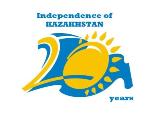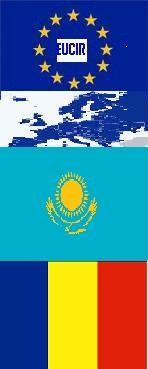Dr. Anton Caragea had draft an analysis of the policies implemented by Japanese Prime Minister-Shinzo Abe in the last year of government and is presenting the main figures of what is called today as abenomics.
Just two years ago the key words about Japan where summarized in the expression: lost decades. After 1990, Japan seems to be fallen in along period marked by stagnation and by natural disasters such as Kobe earthquake and more recent Fukushima tsunami.
On economic field, the country that once towered over the region as an international symbol of economic growth in the sixties and seventies, was struggling now with hipper-inflation, reduced economic competitiveness and the unfair competition of cheep and low quality products of China.
The man who succeeded in pulling up the country from tittering on the brink of the abyss: Shinzo Abe had managed also to enrich the economic vocabulary with a new term: abenomics (a strange mingling of his name-Abe and economics).
What is abenomics?
The economic policy that allowed a new Japanese economic miracle to appear was created by a seasoned and sophisticated mixture of direct state investment in economy and indirect state buying of Japanese National Bank bonds, a move that allowed for the credit to be cheaper and more relaxed and for interest rates to decrease.
This infusion of capital was not planed as a sole engine for economic growth but was planed to aid and support private investment as the key factor in economic development.
State sponsored investment is just an auxiliary, a support and confidence booster in economic growth and an ingredient to further increase private confidence in economy.
Another key element of the economic stimulus plan is offered by the increase in competitiveness of the Japanese products by means of financial support, including currency devaluation that is insuring that national products are cheaper and more attractive and by fiscally backing increases in competitiveness.
Finally, what is making Japanese prime minister plan different is the accent on fighting the inflation and keeping it under control.
As a golden rule, any stimulus package must bear the responsibility of an increase in inflation. Is not the case with Japan where abenomics is creating a serious anti-inflation package with controlling the spike in wages, strict taxation and export oriented growth rather that stimulus of internal consumption.
All are specific measures that are making abenomics a balanced experience between growth and inflation, competitiveness and exports etc. Finally, another trait of the abenomics that deserves our attention is the social management plan.
The pension system, social security and health systems are all regarded as pivots of the economic growth but also of national satisfaction.
Proceeding by this path the Abe government is not falling down the easy road of electoral charity, as done in United States or Europe, but is opting for investing the economic surplus in indirect social expenses that are enriching life quality without inflation as a side effect.
A new inspired decision!
Abenomics-an international model?
Once the first results of abenomics are becoming visible. the plan enjoyed a star status, many economists are predicting a role model for these economic policies, famous economic thinkers as Joseph Stiglitz, risking the prophecy that abenomics will be a successful blue print for world economy.
The general interest was also attracted by the elevation of economic situation at the level of national security agenda.
It is in this decision a message of seriousness and maximum attention that Shinzo Abe government is portraying as a supplementary strong point of the Japanese economy in front of the national and international private investors.
The status of national economy becomes as such an element of national security and your investments are sure, is the subliminal message that Japan is offering to the investment market as a new powerful arguments in his favour.
Undoubtedly, the news of the hay days of Japanese economy is a good news for world economy already deeply endangered by the collapse of Chinese economy.
The abenomics can be only used by the country which already has build a powerful economic apparatus, with a developed industrial mechanism like European Union members states or American economy, as we are confronted with an economic experience that is focused on refining the economic decisions in preventing inflation and insuring a healthy and stable economic development after the current world economic crisis.
As such the abenomics model must be understood and copied by the world economic powers in order to allow a solution to emerge out of this world economic crisis.
By this alone the abenomics can be the most valuable contribution that Japan is presenting in re-launching the world economy development and by extracting the world out of this auto-regenerating crisis.
Today, thanks to abenomics, Japan can rest assured as his role model in world economic recovery is guaranteed.




 Posted by antoncaragea
Posted by antoncaragea 
 Deciphering Obama
Deciphering Obama









You must be logged in to post a comment.